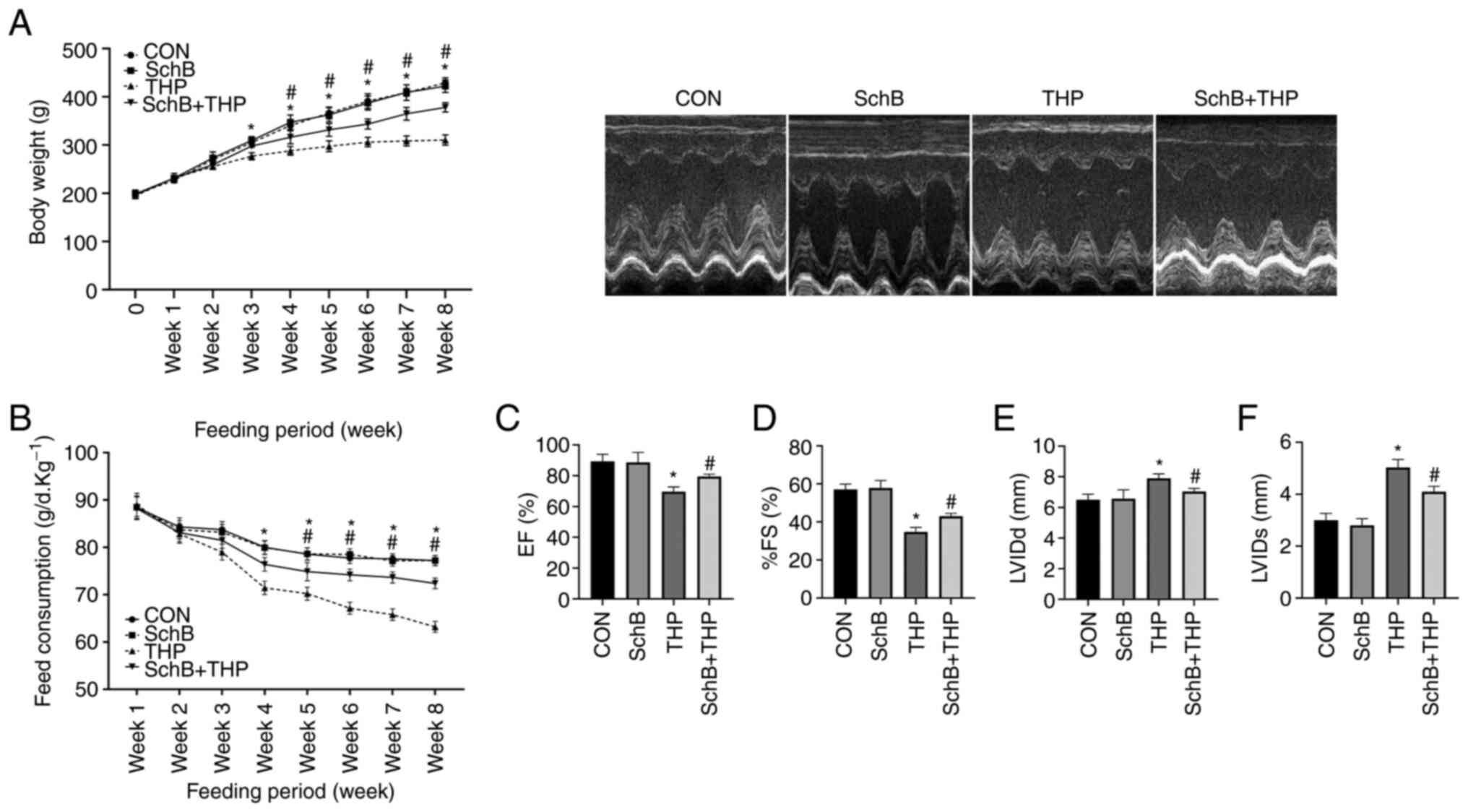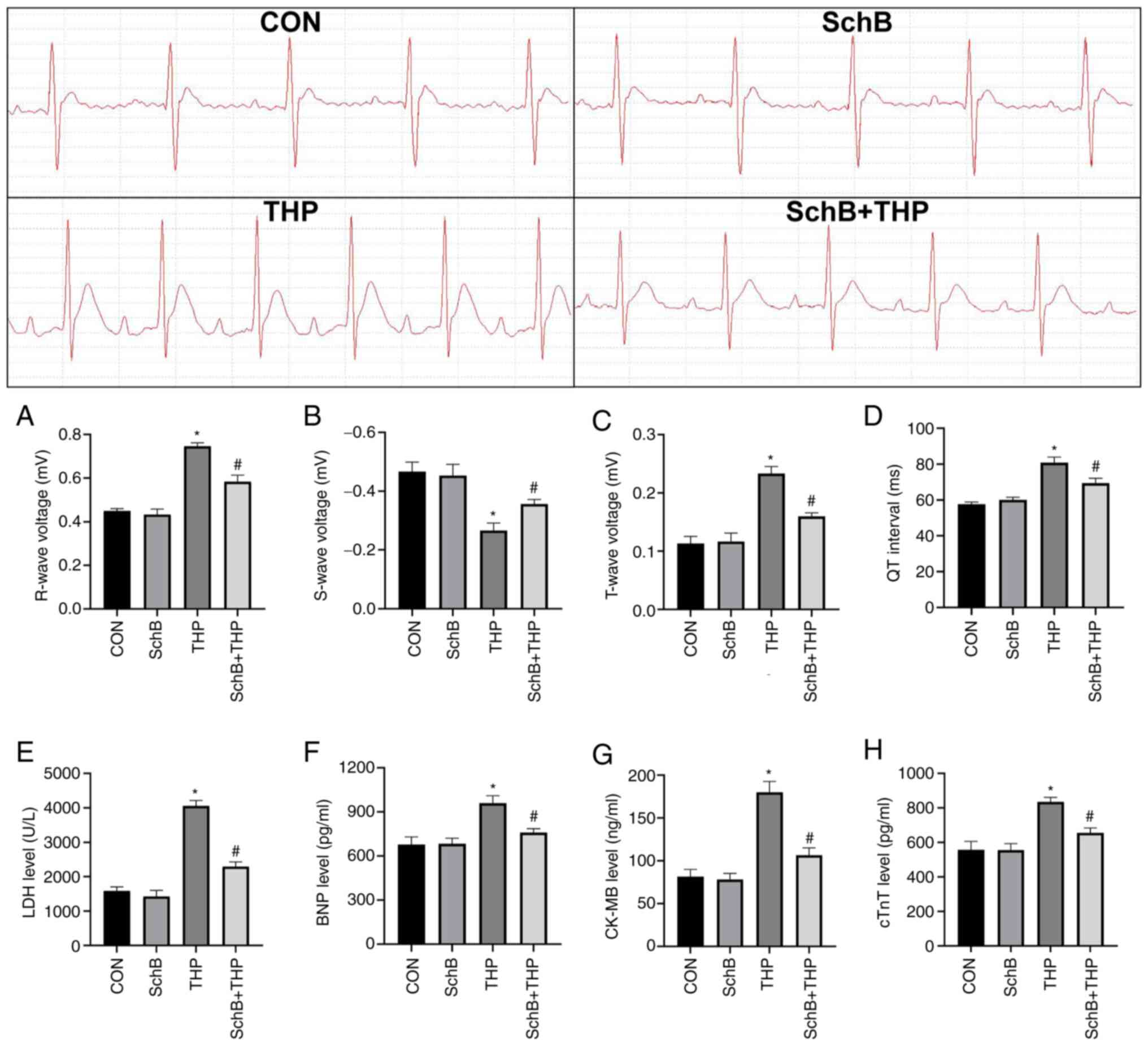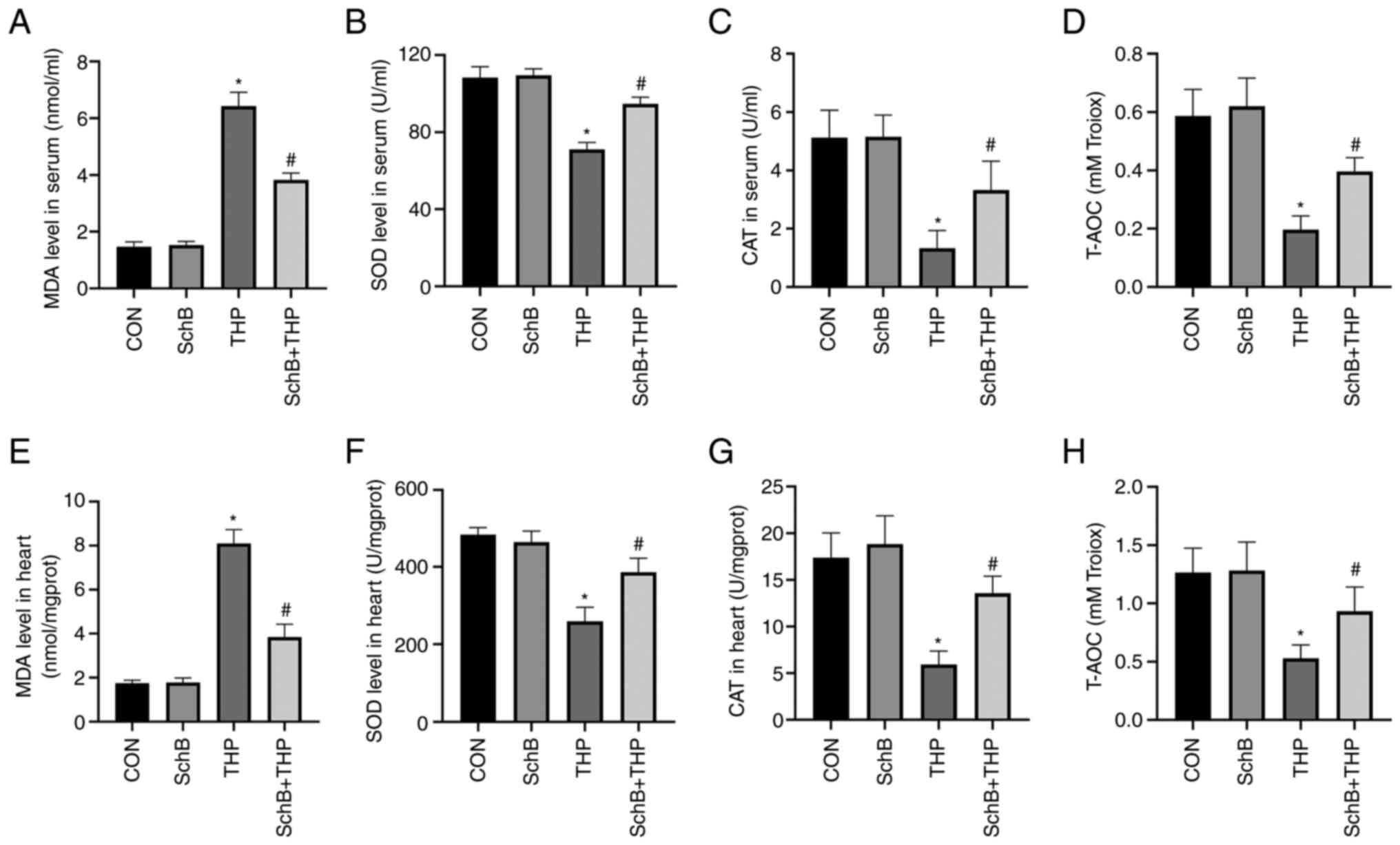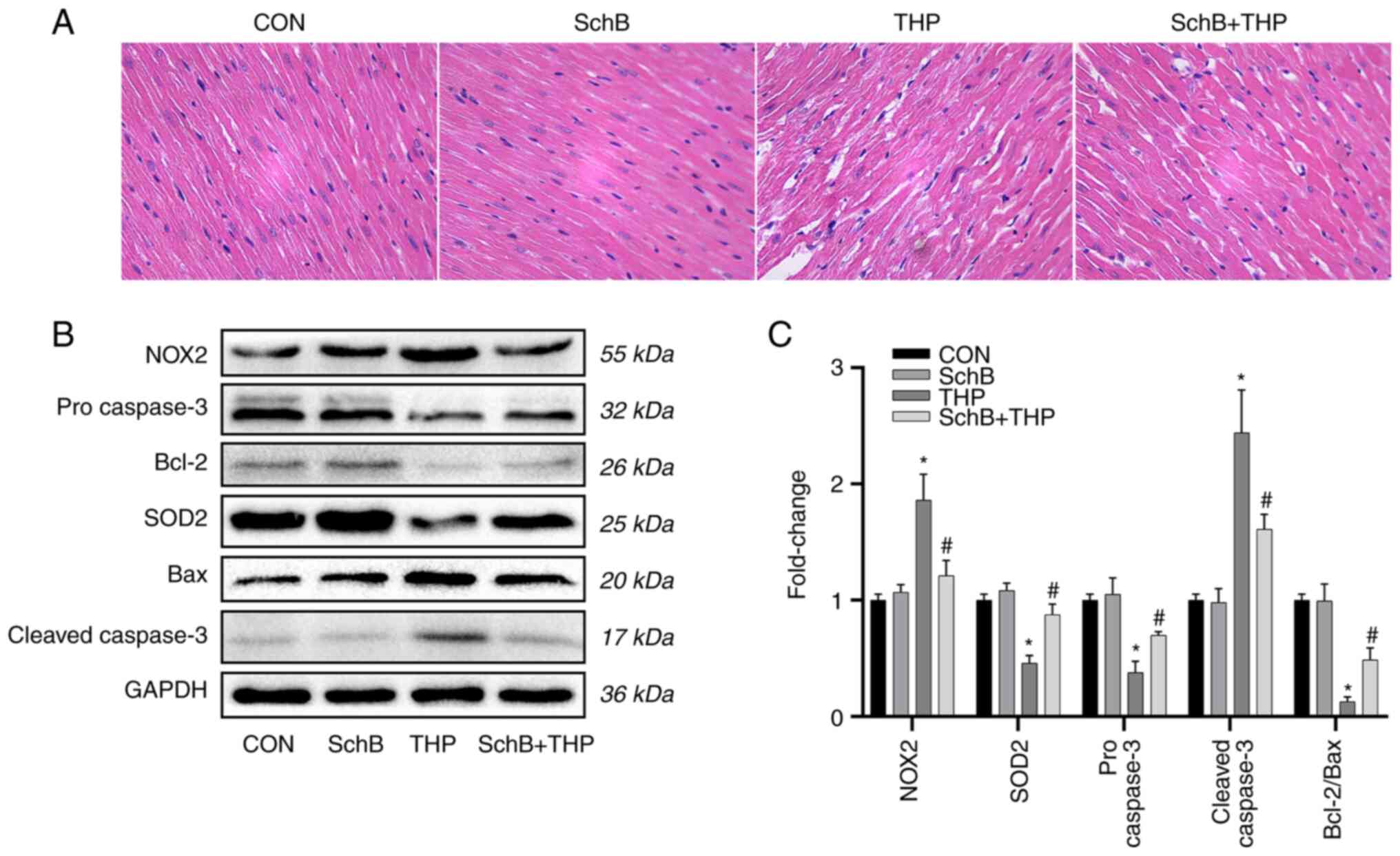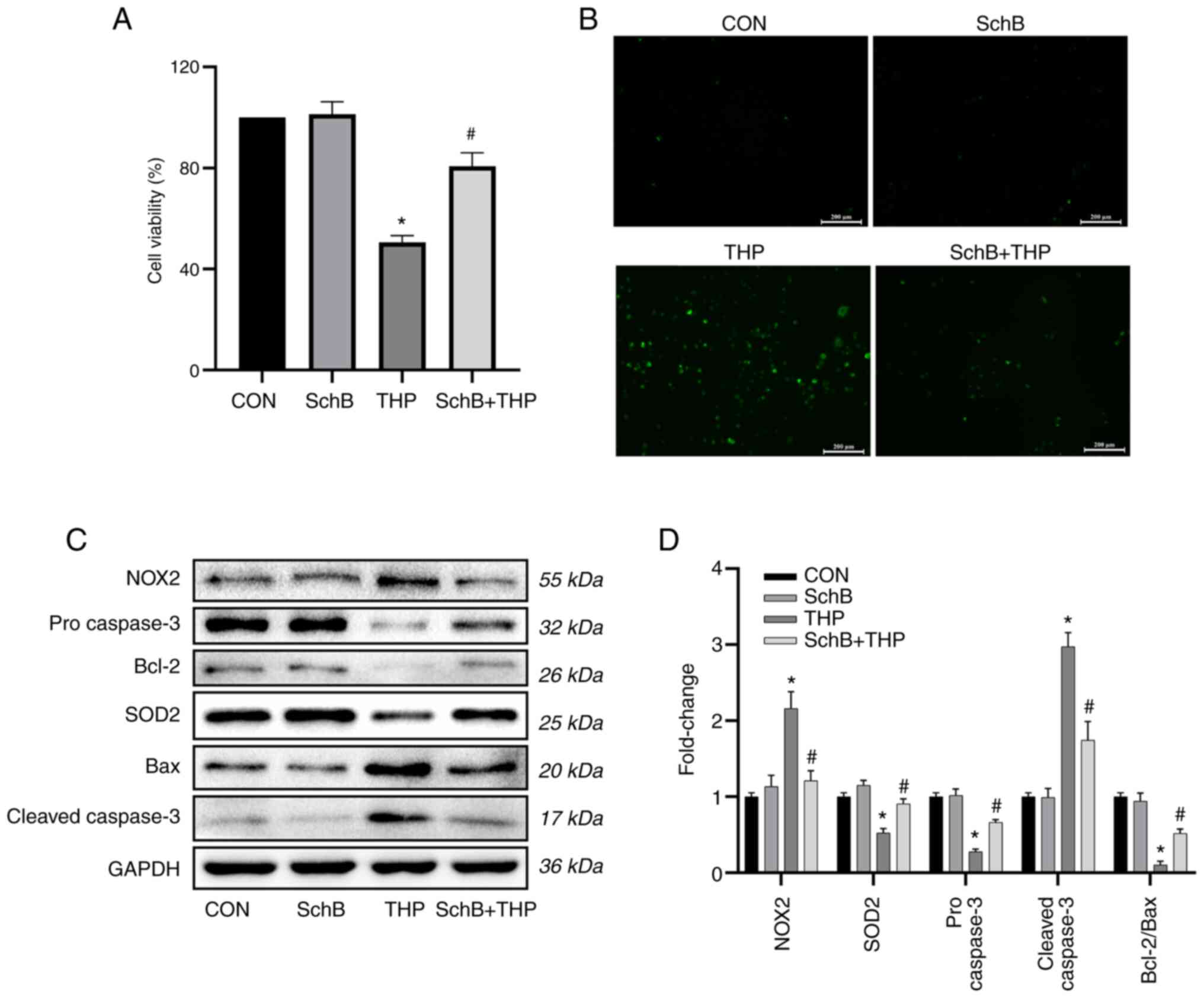|
1
|
Minotti G, Recalcati S, Menna P,
Salvatorelli E, Corna G and Cairo G: Doxorubicin cardiotoxicity and
the control of iron metabolism: Quinone-dependent and independent
mechanisms. Methods Enzymol. 378:340–361. 2004.PubMed/NCBI View Article : Google Scholar
|
|
2
|
Weiss RB: The anthracyclines: Will we ever
find a better doxorubicin? Semin Oncol. 19:670–686. 1992.PubMed/NCBI
|
|
3
|
Maayah ZH, Abdelhamid G, Elshenawy OH,
El-Sherbeni AA, Althurwi HN, McGinn E, Dawood D, Alammari AH and
El-Kadi AOS: The role of soluble epoxide hydrolase enzyme on
daunorubicin-mediated cardiotoxicity. Cardiovasc Toxicol.
18:268–283. 2018.PubMed/NCBI View Article : Google Scholar
|
|
4
|
Skrypnyk I, Maslova G, Lymanets T and
Gusachenko I: L-arginine is an effective medication for prevention
of endothelial dysfunction, a predictor of anthracycline
cardiotoxicity in patients with acute leukemia. Exp Oncol.
39:308–311. 2017.PubMed/NCBI
|
|
5
|
Nicolazzi MA, Carnicelli A, Fuorlo M,
Scaldaferri A, Masetti R, Landolfi R and Favuzzi AMR: Anthracycline
and trastuzumab-induced cardiotoxicity in breast cancer. Eur Rev
Med Pharmacol Sci. 22:2175–2185. 2018.PubMed/NCBI View Article : Google Scholar
|
|
6
|
Bartlett JJ, Trivedi PC and Pulinilkunnil
T: Autophagic dysregulation in doxorubicin cardiomyopathy. J Mol
Cell Cardiol. 104:1–8. 2017.PubMed/NCBI View Article : Google Scholar
|
|
7
|
Afsar T, Razak S, Batoo KM and Khan MR:
Acacia hydaspica R. Parker prevents doxorubicin-induced cardiac
injury by attenuation of oxidative stress and structural
Cardiomyocyte alterations in rats. BMC Complement Altern Med.
17(554)2017.PubMed/NCBI View Article : Google Scholar
|
|
8
|
Songbo M, Lang H, Xinyong C, Bin X, Ping Z
and Liang S: Oxidative stress injury in doxorubicin-induced
cardiotoxicity. Toxicol Lett. 307:41–48. 2019.PubMed/NCBI View Article : Google Scholar
|
|
9
|
Zhao L, Qi Y, Xu L, Tao X, Han X, Yin L
and Peng J: MicroRNA-140-5p aggravates doxorubicin-induced
cardiotoxicity by promoting myocardial oxidative stress via
targeting Nrf2 and Sirt2. Redox Biol. 15:284–296. 2018.PubMed/NCBI View Article : Google Scholar
|
|
10
|
Lu TL, Wu XY, Song Y, Chen H, Xu B, Zhou
Y, Huang ZJ, Sun Y and Mao CQ: Effect of acupuncture on target
tissue distribution of Schisandra lignans. Acupunct Med.
31:207–213. 2013.PubMed/NCBI View Article : Google Scholar
|
|
11
|
Wu Y, Li ZC, Yao LQ, Li M and Tang M:
Schisandrin B alleviates acute oxidative stress via modulation of
the Nrf2/Keap1-mediated antioxidant pathway. Appl Physiol Nutr
Metab. 44:1–6. 2019.PubMed/NCBI View Article : Google Scholar
|
|
12
|
Lam PY and Ko KM: Schisandrin B as a
hormetic agent for preventing age-related neurodegenerative
diseases. Oxid Med Cell Longev. 2012(250825)2012.PubMed/NCBI View Article : Google Scholar
|
|
13
|
Lam PY, Yan CW, Chiu PY, Leung HY and Ko
KM: Schisandrin B protects against solar irradiation-induced
oxidative stress in rat skin tissue. Fitoterapia. 82:393–400.
2011.PubMed/NCBI View Article : Google Scholar
|
|
14
|
Nasser MI, Zhu S, Chen C, Zhao M, Huang H
and Zhu P: A comprehensive review on schisandrin B and its
biological properties. Oxid Med Cell Longev.
2020(2172740)2020.PubMed/NCBI View Article : Google Scholar
|
|
15
|
Zhu H, Zhang X, Guan J, Cui B, Zhao L and
Zhao X: Pharmacokinetics and tissue distribution study of
schisandrin B in rats by ultra-fast liquid chromatography with
tandem mass spectrometry. J Pharm Biomed Anal. 78-79:136–140.
2013.PubMed/NCBI View Article : Google Scholar
|
|
16
|
Jiang EP, Li H, Yu CR, Yu CY, Jing S, Sun
HX, Wang CM, Fan XT, Chen JG and Wang S: Schisandrin B protects
PC12 cells against oxidative stress of neurodegenerative diseases.
Neuroreport. 26:360–366. 2015.PubMed/NCBI View Article : Google Scholar
|
|
17
|
Zhao X, Xiang Y, Cai C, Zhou A, Zhu N and
Zeng C: Schisandrin B protects against myocardial
ischemia/reperfusion injury via the PI3K/Akt pathway in rats. Mol
Med Rep. 17:556–561. 2018.PubMed/NCBI View Article : Google Scholar
|
|
18
|
Shi H, Zeng Q, Wei Y, Yang H, Tang H, Wang
D, Pu P and Feng R: Canagliflozin is a potential cardioprotective
drug but exerts no significant effects on pirarubicin-induced
cardiotoxicity in rats. Mol Med Rep. 24(703)2021.PubMed/NCBI View Article : Google Scholar
|
|
19
|
Chen N and Ko M: Schisandrin B-induced
glutathione antioxidant response and cardioprotection are mediated
by reactive oxidant species production in rat hearts. Biol Pharm
Bull. 33:825–829. 2010.PubMed/NCBI View Article : Google Scholar
|
|
20
|
Miller AA and Salewski E: Prospects for
pirarubicin. Med Pediatr Oncol. 22:261–688. 1994.PubMed/NCBI View Article : Google Scholar
|
|
21
|
Tang H, Zeng Q, Tang T, Wei Y and Pu P:
Kaempferide improves glycolipid metabolism disorder by activating
PPARγ in high-fat-diet-fed mice. Life Sci.
270(119133)2021.PubMed/NCBI View Article : Google Scholar
|
|
22
|
Tang H, Zeng Q, Ren N, Wei Y, He Q, Chen M
and Pu P: Kaempferide improves oxidative stress and inflammation by
inhibiting the TLR4/IκBα/NF-κB pathway in obese mice. Iran J Basic
Med Sci. 24:493–498. 2021.PubMed/NCBI View Article : Google Scholar
|
|
23
|
Xu J, Liu D, Niu H, Zhu G, Xu Y, Ye D, Li
J and Zhang Q: Resveratrol reverses Doxorubicin resistance by
inhibiting epithelial-mesenchymal transition (EMT) through
modulating PTEN/Akt signaling pathway in gastric cancer. J Exp Clin
Cancer Res. 36(19)2017.PubMed/NCBI View Article : Google Scholar
|
|
24
|
Li L, Pan Q, Han W, Liu Z, Li L and Hu X:
Schisandrin B prevents doxorubicin-induced cardiotoxicity via
enhancing glutathione redox cycling. Clin Cancer Res. 13:6753–6760.
2007.PubMed/NCBI View Article : Google Scholar
|
|
25
|
Xu Y, Liu Z, Sun J, Pan Q, Sun F, Yan Z
and Hu X: Schisandrin B prevents doxorubicin-induced chronic
cardiotoxicity and enhances its anticancer activity in vivo. PLoS
One. 6(e28335)2011.PubMed/NCBI View Article : Google Scholar
|
|
26
|
Anqi Y, Yu Z, Mingjun X, Xiaoli K,
Mengmeng L, Fangfang L and Mei Z: Use of echocardiography to
monitor myocardial damage during anthracycline chemotherapy.
Echocardiography. 36:495–502. 2019.PubMed/NCBI View Article : Google Scholar
|
|
27
|
Saidi A and Alharethi R: Management of
chemotherapy induced cardiomyopathy. Curr Cardiol Rev. 7:245–249.
2011.PubMed/NCBI View Article : Google Scholar
|
|
28
|
Simões R, Silva LM, Cruz A, Fraga VG, de
Paula Sabino A and Gomes KB: Troponin as a cardiotoxicity marker in
breast cancer patients receiving anthracycline-based chemotherapy:
A narrative review. Biomed Pharmacother. 107:989–996.
2018.PubMed/NCBI View Article : Google Scholar
|
|
29
|
Cardinale D, Sandri MT, Colombo A, Colombo
N, Boeri M, Lamantia G, Civelli M, Peccatori F, Martinelli G,
Fiorentini C and Cipolla CM: Prognostic value of troponin I in
cardiac risk stratification of cancer patients undergoing high-dose
chemotherapy. Circulation. 109:2749–2754. 2004.PubMed/NCBI View Article : Google Scholar
|
|
30
|
Cappetta D, De Angelis A, Sapio L,
Prezioso L, Illiano M, Quaini F, Rossi F, Berrino L, Naviglio S and
Urbanek K: Oxidative stress and cellular response to doxorubicin: A
common factor in the complex milieu of anthracycline
cardiotoxicity. Oxid Med Cell Longev. 2017(1521020)2017.PubMed/NCBI View Article : Google Scholar
|
|
31
|
Farías JG, Molina VM, Carrasco RA, Zepeda
AB, Figueroa E, Letelier P and Castillo RL: Antioxidant therapeutic
strategies for cardiovascular conditions associated with oxidative
stress. Nutrients. 9(966)2017.PubMed/NCBI View Article : Google Scholar
|
|
32
|
Yu Y and Zheng G: Troxerutin protects
against diabetic cardiomyopathy through NF-κB/AKT/IRS1 in a rat
model of type 2 diabetes. Mol Med Rep. 15:3473–3478.
2017.PubMed/NCBI View Article : Google Scholar
|
|
33
|
Huang ZW, Liu N, Li D, Zhang HY, Wang Y,
Liu Y, Zhang LL and Ju XL: Angiopoietin-1 modified human umbilical
cord mesenchymal stem cell therapy for endotoxin-induced acute lung
injury in rats. Yonsei Med J. 58:206–216. 2017.PubMed/NCBI View Article : Google Scholar
|
|
34
|
Sun HL, Peng ML, Lee SS, Chen CJ, Chen WY,
Yang ML and Kuan YH: Endotoxin-induced acute lung injury in mice is
protected by 5,7-dihydroxy-8-methoxyflavone via inhibition of
oxidative stress and HIF-1α. Environ Toxicol. 31:1700–1709.
2016.PubMed/NCBI View Article : Google Scholar
|
|
35
|
Gray SP and Jandeleit-Dahm KA: The role of
NADPH oxidase in vascular disease - hypertension, atherosclerosis
and stroke. Curr Pharm Des. 21:5933–5944. 2015.PubMed/NCBI View Article : Google Scholar
|
|
36
|
Parajuli N, Patel VB, Wang W, Basu R and
Oudit GY: Loss of NOX2 (gp91phox) prevents oxidative stress and
progression to advanced heart failure. Clin Sci (Lond).
127:331–340. 2014.PubMed/NCBI View Article : Google Scholar
|
|
37
|
Manuneedhi Cholan P, Cartland SP and
Kavurma MM: NADPH oxidases, angiogenesis, and peripheral artery
disease. Antioxidants (Basel). 6(56)2017.PubMed/NCBI View Article : Google Scholar
|
|
38
|
Xin DQ, Hu ZM, Huo HJ, Yang XJ, Han D,
Xing WH, Zhao Y and Qiu QH: Schisandrin B attenuates the
inflammatory response, oxidative stress and apoptosis induced by
traumatic spinal cord injury via inhibition of p53 signaling in
adult rats. Mol Med Rep. 16:533–538. 2017.PubMed/NCBI View Article : Google Scholar
|
|
39
|
Kim SR, Lee MK, Koo KA, Kim SH, Sung SH,
Lee NG, Markelonis GJ, Oh TH, Yang JH and Kim YC:
Dibenzocyclooctadiene lignans from Schisandra chinensis protect
primary cultures of rat cortical cells from glutamate-induced
toxicity. J Neurosci Res. 76:397–405. 2004.PubMed/NCBI View Article : Google Scholar
|
|
40
|
Zhang X, Hu C, Kong CY, Song P, Wu HM, Xu
SC, Yuan YP, Deng W, Ma ZG and Tang QZ: FNDC5 alleviates oxidative
stress and cardiomyocyte apoptosis in doxorubicin-induced
cardiotoxicity via activating AKT. Cell Death Differ. 27:540–55.
2020.PubMed/NCBI View Article : Google Scholar
|
|
41
|
Wu Y, Wang B, Xu H, Tang L, Li Y, Gong L,
Wang Y and Li W: Probiotic Bacillus attenuates oxidative
stress-induced intestinal injury via p38-mediated autophagy. Front
Microbiol. 10(2185)2019.PubMed/NCBI View Article : Google Scholar
|
|
42
|
Wang M, Meng XB, Yu YL, Sun GB, Xu XD,
Zhang XP, Dong X, Ye JX, Xu HB, Sun YF and Sun XB: Elatoside C
protects against hypoxia/reoxygenation-induced apoptosis in H9c2
cardiomyocytes through the reduction of endoplasmic reticulum
stress partially depending on STAT3 activation. Apoptosis.
19:1727–1735. 2014.PubMed/NCBI View Article : Google Scholar
|















